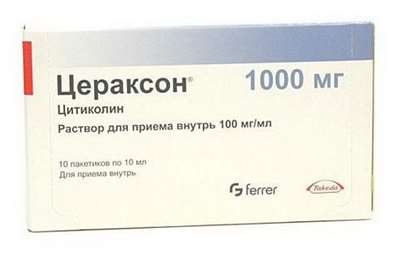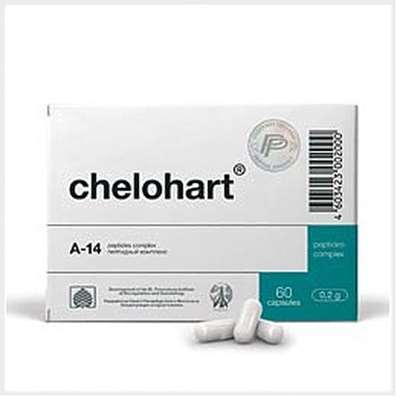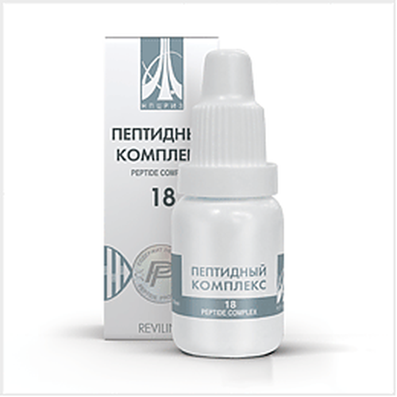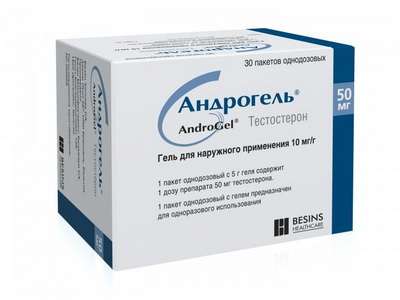Instruction for use: Efevelon
I want this, give me price
Dosage form: coated tablets
Active substance: Venlafaxine*
ATX
N06AX16 Venlafaxine
Pharmacological groups:
Antidepressant [Antidepressants]
The nosological classification (ICD-10)
F32 Depressive episode: Adynamic subdepression; Astheno-adynamic subdepressive states; Asthenoadressive disorder; Astheno-depressive disorder; Asthenodepressive state; Astheno-depressive state; Major Depressive Disorder; Vyaloapatichesky depression with retardation; Double Depression; Depressive pseudodement; Depressive illness; Depressive mood disorder; Depressive disorder; Depressive mood disorder; Depressive state; Depressive disorders; Depressive syndrome; Depressive syndrome larviated; Depressive syndrome in psychoses; Depressed masks; Depression; Depression Depletion; Depression with the phenomena of inhibition within the framework of cyclothymia; Depression is smiling; Involutional depression; Involutionary melancholy; Involutional depression; Manic-depressive disorder; Masked Depression; Melancholic Attack; Neurotic depression; Neurotic depression; Shallow Depression; Organic depression; Organic depressive syndrome; Simple depression; Simple melancholic syndrome; Psychogenic depression; Reactive depression; Reactive depression with moderate psychopathological symptoms; Reactive depressive states; Reactive depression; Recurrent depression; Seasonal depressive syndrome; Severostatic depression; Senile Depression; Symptomatic Depression; Somatogenic depression; Cyclotymic depression; Exogenous depression; Endogenous depression; Endogenous Depressive Conditions; Endogenous Depression; Endogenous depressive syndrome
F33 Recurrent depressive disorder: Major depressive disorder; Secondary depression; Double Depression; Depressive pseudodement; Depressive mood disorder; Depressive disorder; Depressive mood disorder; Depressive state; Depressive syndrome; Depressed masks; Depression; Depression is smiling; Involutional depression; Involutional depression; Masked Depression; Melancholic Attack; Reactive depression; Reactive depression with moderate psychopathological symptoms; Reactive depressive states; Exogenous depression; Endogenous depression; Endogenous Depressive Conditions; Endogenous Depression; Endogenous depressive syndrome
Composition
Coated tablets.
venlafaxine hydrochloride (equivalent to venlafaxine base) 37.5 mg; 75 mg
auxiliary substances: lactose monohydrate; ICC; sodium croscarmellose; povidone K30; magnesium stearate; purified water;
film coating: Opadry 03┬23319 orange; hypromellose; titanium dioxide; macrogol / PEG 400; dye yellow sunset FCF
in a blister of 10 pcs .; in a pack of cardboard 3 blisters.
Description of dosage form
Round, biconvex tablets covered with a cover, orange, labeled on one side: "V2" - for tablets 37.5 mg; tablets with a dosage of 75 mg with risks from both sides, lateral risks and labeling "V" on the one hand risks and "4" on the other.
Pharmachologic effect
Mode of action - antidepressant.
Pharmacodynamics
Venlafaxine, an antidepressant not chemically related to any class of antidepressants (tricyclic, tetracyclic or other), is a mixture of two active enantiomers.
The mechanism of antidepressant drug effect is associated with its ability to potentiate the transmission of the nerve impulse in the CNS. Venlafaxine and its main metabolite O-desmethylvenlafaxine (EFA) are potent inhibitors of serotonin and noradrenaline reuptake (SNRI) and weak inhibitors of dopamine reuptake. In addition, venlafaxine and O-desmethylvenlafaxine reduce beta-adrenergic reactivity both after a single administration and at a constant intake. Venlafaxine and EFA equally effectively affect the reuptake of neurotransmitters.
Venlafaxine does not have an affinity for muscarinic cholinergic, histamine and α1-adrenergic receptors in the brain. Venlafaxine does not suppress MAO activity. Has no affinity for opiate, benzodiazepine, phencyclidine or N-methyl-d-aspartate (NMDA) receptors.
Pharmacokinetics
Venlafaxine is well absorbed from the digestive tract. After a single dose of 25-150 mg Cmax in the blood plasma reaches 33-172 ng / ml for about 2.4 hours. It is subjected to intensive metabolism during the "first passage" through the liver. Its main metabolite is O-desmethylvenlafaxine (EFA). T1 / 2 venlafaxine and EFA are respectively 5 and 11 h. Cmax EFA in blood plasma (61-325 ng / ml) is achieved approximately 4.3 hours after administration. The binding of venlafaxine and EFA with blood plasma proteins is 27 and 30%, respectively. EFA and other metabolites, as well as unmetabolized venlafaxine, are secreted by the kidneys. With repeated administration, the equilibrium concentrations of venlafaxine and EFA are reached within 3 days. In the range of daily doses of 75-450 mg venlafaxine and EFA have linear kinetics. After taking the drug during meals, the time to reach the maximum concentration in the blood plasma increases by 20-30 minutes, but the maximum concentration and absorption do not change.
In patients with cirrhosis of the liver, the concentrations in the blood plasma of venlafaxine and EFA are increased, and their elimination rate is reduced. With moderate or severe renal failure, the total clearance of venlafaxine and EFA is reduced, and the half-life is prolonged. The decrease in overall clearance is mainly observed in patients with Cl creatinine below 30 ml / min. Age and sex of the patient do not affect the pharmacokinetics of the drug.
Indications for the Efevelon
Treatment of depression and prevention of relapse.
Contraindications
hypersensitivity;
simultaneous administration of MAO inhibitors (see also section "Interaction");
severe impairment of kidney and / or liver function (glomerular filtration rate less than 10 ml / min);
age to 18 years (safety and efficacy for this age group are not proven);
established pregnancy or suspected pregnancy;
the period of breastfeeding.
Carefully:
recently suffered myocardial infarction, unstable angina;
arterial hypertension;
tachycardia;
seizure syndrome in history;
increased intraocular pressure, angle-closure glaucoma;
manic conditions in the anamnesis;
predisposition to bleeding from the skin and mucous membranes;
initially reduced body weight.
Application in pregnancy and lactation
The safety of venlafaxine during pregnancy is not proven, so use during pregnancy (or presumptive pregnancy) is possible only if the potential benefit to the mother exceeds the possible risk to the fetus. Women of childbearing age should be warned about this before starting treatment and should immediately seek medical attention in the event of pregnancy or planning pregnancy during drug treatment. Venlafaxine and its metabolite (EFA) are excreted in breast milk. The safety of these substances for newborn babies is not proven, therefore, the use of venlafaxine during breastfeeding is not recommended. If you need to take the drug during breastfeeding, you should decide whether to stop breastfeeding. If the mother's treatment was completed shortly before the birth, a newborn can have withdrawal symptoms.
Side effects
Most of the side effects listed below depend on the dose. With long-term treatment, the severity and frequency of most of these effects is reduced, the need for discontinuing therapy does not arise.
In order of decreasing frequency: often - ≥1%, sometimes ≥0.1 - <1%, rarely - ≥0.01 - <0.1%, very rarely - <0.01%.
Common symptoms: weakness, fatigue.
On the part of the gastrointestinal tract: a decrease in appetite, constipation, nausea, vomiting, dry mouth, rarely - hepatitis.
From the side of metabolism: increased serum cholesterol levels, weight loss; sometimes - changes in laboratory tests of liver function, hyponatremia, syndrome of insufficient secretion of antidiuretic hormone.
From the side of the cardiovascular system: arterial hypertension, hyperemia of the skin; sometimes - postural hypotension, tachycardia.
From the nervous system: unusual dreams, dizziness, insomnia, increased excitability, paresthesia, stupor, increased muscle tone, tremor; sometimes - apathy, hallucinations, muscle spasms, serotonin syndrome; rarely - epileptic seizures, manic reactions, as well as symptoms resembling a malignant neuroleptic syndrome.
On the part of the genitourinary system: violations of ejaculation, erections, anorgasmia, dysuric disorders (mainly - difficulties in the beginning of urination); sometimes - decreased libido, menorrhagia, urinary retention.
From the sense organs: disruption of accommodation, mydriasis, impaired vision; sometimes - a violation of taste sensations.
From the skin: sweating; sometimes - photosensitivity reactions; rarely - erythema multiforme, Stevens-Johnson syndrome.
On the part of the system of hematopoiesis and blood clotting: sometimes - thrombocytopenia; hemorrhages in the skin (ecchymosis) and mucous membranes, rarely - lengthening the time of bleeding.
Hypersensitivity reactions: sometimes - skin rash; very rarely - anaphylactic reactions.
After severe cancellation of venlafaxine or a decrease in its dose, fatigue, drowsiness, headache, nausea, vomiting, anorexia, dry mouth, dizziness, diarrhea, insomnia, anxiety, increased irritability, disorientation, hypomania, paresthesia, sweating may be observed. These symptoms are usually mild and go untreated. Because of the likelihood of these symptoms, it is very important to gradually reduce the dose of the drug.
Interaction
The simultaneous use of MAO inhibitors and venlafaxine is contraindicated. The drug Ephevelon can be started at least 14 days after the end of therapy with MAO inhibitors. If a reversible MAO inhibitor (moclobemide) was used, this interval may be shorter (24 h). Therapy with MAO inhibitors can begin at least 7 days after the withdrawal of the drug Epevelon.
Venlafaxine does not affect the pharmacokinetics of lithium.
When used simultaneously with imipramine, the pharmacokinetics of venlafaxine and its metabolite O-desmethylvenlafaxine (EFA) does not change.
Haloperidol: the effect of the latter may be enhanced due to an increase in the level of the drug in the blood in a joint application.
With simultaneous use with diazepam, the pharmacokinetics of drugs and their major metabolites does not change significantly. Also, there was no effect on the psychomotor and psychometric effects of diazepam.
With simultaneous use with clozapine, there may be an increase in its level in the blood plasma and the development of side effects (eg epileptic seizures).
With simultaneous use with risperidone (despite an increase in risperidone AUC), the pharmacokinetics of the sum of active components (risperidone and its active metabolite) did not change significantly.
Increases the effect of alcohol on psychomotor reactions.
On the background of taking venlafaxine, special care should be taken with electroconvulsive therapy. experience with venlafaxine in these conditions is absent.
Drugs metabolized by cytochrome P450 isoenzymes: the enzyme CYP2D6 of the cytochrome P450 system converts venlafaxine to the active metabolite O-desmethylvenlafaxine (EFA). Unlike many other antidepressants, the dose of venlafaxine can not be reduced while being administered with CYP2D6 inhibitory drugs or in patients with a genetically determined decrease in CYP2D6 activity, since the total concentration of active substance and metabolite (venlafaxine and EFA) will not change.
The main way to eliminate venlafaxine involves metabolism involving CYP2D6 and CYP3A4; therefore, special care should be taken with the appointment of venlafaxine in combination with drugs that depress both of these enzymes. Such drug interactions have not yet been investigated.
Venlafaxine is a relatively weak inhibitor of CYP2D6 and does not suppress the activity of the isoenzymes CYP1A2, CYP2C9 and CYP3A4; therefore, its interaction with other drugs in the metabolism of which these hepatic enzymes are involved should not be expected.
Cimetidine suppresses the metabolism of the "first passage" of venlafaxine and does not affect the pharmacokinetics of O-desmethylvenlafaxine. In most patients, only a slight increase in the total pharmacological activity of venlafaxine and O-desmethylvenlafaxine is expected (more pronounced in elderly patients and in liver failure).
Clinically significant interactions of venlafaxine with antihypertensive (including beta-blockers, ACE inhibitors and diuretics) and antidiabetic drugs have not been detected.
Drugs associated with blood plasma proteins: binding to plasma proteins is 27% for venlafaxine and 30% for EFA. Therefore, venlafaxine does not affect the concentration of drugs in the blood plasma, which have a high degree of binding to proteins.
With the simultaneous administration of warfarin, the anticoagulant effect of the latter can be enhanced.
With simultaneous administration with indinavir, the pharmacokinetics of indinavir changes (with a 28% decrease in AUC and a 36% decrease in Cmax), and the pharmacokinetics of venlafaxine and EFA do not change. However, the clinical significance of this effect is unknown.
Dosing and Administration
Inside, not liquid, squeezed liquid, preferably at the same time, during meals.
The recommended initial dose is 75 mg in 2 divided doses (37.5 mg daily). The recommended dosage for depression of moderate severity is 225 mg / day in 3 divided doses. If necessary, the dosage can be increased at intervals of not less than 4 days by 75 mg / day. If after several weeks of treatment there is no significant improvement, the daily dose can be increased to 150 mg (2 × 75 mg per day). If, in the doctor's opinion, a higher dose is required (severe depressive disorder or other conditions requiring in-patient treatment), 150 mg can be given immediately in two divided doses (2 × 75 mg per day). After this, the daily dose can be increased by 75 mg every 2-3 days until the desired therapeutic effect is achieved. The maximum daily dose of the drug Epevelon is 375 mg. After achieving the necessary therapeutic effect, the daily dose can be gradually reduced to a minimum effective level.
Supportive therapy and prevention of relapse: supportive treatment can last 6 months or more. The minimum effective doses used in the treatment of a depressive episode are prescribed.
Renal failure: with mild renal failure (glomerular filtration rate (GFR) of more than 30 ml / min), correction of the dosing regimen is not required. With moderate renal failure (GFR - 10-30 ml / min), the dose should be reduced by 25-50%. In connection with the lengthening of the half-life of venlafaxine and its active metabolite (EFA), such patients should take the entire dose 1 time per day. It is not recommended to use venlafaxine in severe renal failure (GFR less than 10 ml / min), since there is no reliable data on such therapy. Patients on hemodialysis can receive 50% of the usual daily dose of venlafaxine after completion of hemodialysis.
Hepatic failure: with mild hepatic insufficiency (prothrombin time (PV) less than 14 s), correction of the dosing regimen is not required. With moderate hepatic insufficiency (IV 14 to 18 s), the dose should be reduced by 50%. It is not recommended to use venlafaxine in severe hepatic insufficiency, since there are no reliable data on such therapy.
Elderly patients: the old age of the patient does not require a dose change, but as with other medications, caution is needed in the treatment of elderly patients, for example, due to the possibility of impaired renal function. The lowest effective dose should be used. When the dose is raised, the patient must be under careful medical supervision.
Discontinuation of the drug: at the end of taking Epevelone, it is recommended to gradually reduce the dosage of the drug for at least 1 week, and monitor the patient's condition in order to minimize the risk associated with withdrawal of the drug (see below).
The period required to completely stop taking the drug depends on its dosage, the length of the course of treatment and the individual characteristics of the patient.
Overdose
Symptoms: changes in the ECG (prolongation of the QT interval, blockage of the bundle of the bundle, expansion of the QRS complex), sinus or ventricular tachycardia, bradycardia, hypotension, convulsive conditions, altered consciousness (decreased wakefulness). In case of an overdose of venlafaxine with concomitant intake with alcohol and / or other psychotropic drugs, a fatal outcome was reported.
Treatment: symptomatic. Specific antidotes are unknown. It is recommended continuous monitoring of vital functions (breathing and circulation). The purpose of activated charcoal to reduce absorption of the drug. It is not recommended to induce vomiting due to the danger of aspiration. Venlafaxine and EFA are not excreted in dialysis.
Special instructions
Discontinuation of the drug Ephevelone: as with other antidepressant medications, a sharp discontinuation of venlafaxine therapy - especially after high doses of the drug - can cause withdrawal symptoms, and therefore it is recommended to gradually reduce the dose before stopping the drug. The length of the period necessary to reduce the dose depends on the size of the dose, the duration of therapy, and the individual sensitivity of the patient.
When prescribing Epevelone, patients with lactose intolerance should take into account the lactose content (56.62 mg in each tablet 25 mg, 84.93 mg in each tablet 37.5 mg, 113.24 mg in each tablet 50 mg, 169.86 mg in each tablet 75 mg).
In patients with depressive disorders, the likelihood of suicidal attempts should be considered before initiating any drug therapy. Therefore, to reduce the risk of overdose, the initial dose of the drug should be as low as possible, and the patient should be under careful medical supervision.
In patients with affective disorders in the treatment of antidepressants, incl. venlafaxine, hypomanic or manic conditions may occur. Like other antidepressants, venlafaxine should be administered with caution to a patient with a history of mania. Such patients need medical supervision.
Like other antidepressants, venlafaxine should be administered with caution to patients with epileptic seizures in the anamnesis. Treatment with venlafaxine should be interrupted if epileptic seizures occur.
Patients should be warned about the need to consult a doctor immediately if rashes, urticaria or other allergic reactions occur.
In some patients, a dose-dependent increase in blood pressure was noted during venlafaxine intake, which is why regular monitoring of blood pressure is recommended, especially during the period of clarification or increase in dosage.
An increase in heart rate may occur, especially during high doses. Care is advised with tachyarrhythmias.
Patients, especially the elderly, should be warned about the possibility of dizziness and discomfort.
Like other serotonin reuptake inhibitors, venlafaxine may increase the risk of hemorrhages in the skin and mucous membranes. Care should be taken when treating patients who are predisposed to such conditions.
When taking venlafaxine, especially in conditions of dehydration or a decrease in blood volume (including in elderly patients and patients taking diuretics), hyponatremia and / or a syndrome of insufficient secretion of antidiuretic hormone can be observed.
During the administration of the drug may be observed mydriasis, in connection with which it is recommended to control intraocular pressure in patients prone to its increase or suffering from an angle-closure glaucoma.
There is insufficient data on the use of venlafaxine in patients who have recently undergone myocardial infarction and who suffer from decompensated heart failure. Such patients should be administered with caution.
The clinical trials conducted to date have not revealed a tolerance to, or dependence on, venlafaxine. Despite this, as with other drugs acting on the central nervous system, the doctor must establish careful monitoring of patients to identify signs of drug abuse. Careful monitoring and follow-up are necessary for patients who have a history of such symptoms.
Women of childbearing age should apply appropriate methods of contraception during the administration of venlafaxine.
Despite the fact that venlafaxine does not affect psychomotor and cognitive functions, it should be borne in mind that any drug therapy with psychoactive drugs may reduce the ability to make judgments, thinking or performing motor functions. This should be warned by the patient before starting treatment. If such effects occur, the extent and duration of the restrictions should be determined by the physician. Also, alcohol is not recommended.
Storage conditions for Efevelon
In a dry place, at a temperature of no higher than 30 ░ C.
Keep out of the reach of children.
Shelf life of Efevelon
3 years.
Do not use after the expiry date printed on the package.

 Cart
Cart





